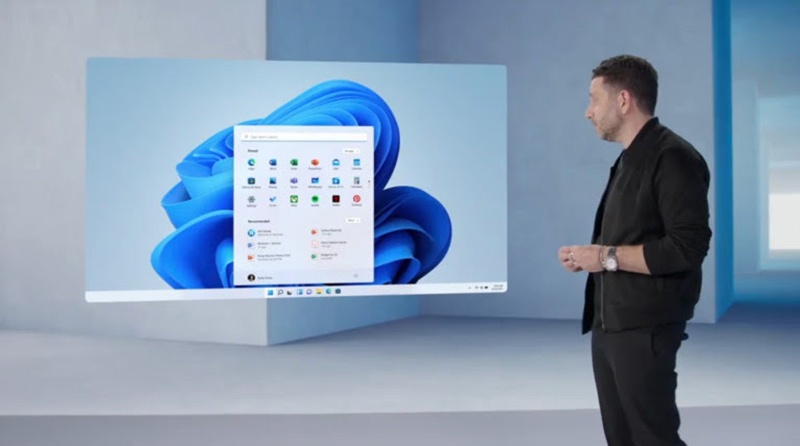Microsoft has unveiled the next generation of its Windows software, called Windows 11, that has sleeker visual features and is more open to third-party apps.
The newest version of Microsoft’s flagship operating system announced on Thursday will be a successor to today’s Windows 10, which the company introduced in 2015.
"Today marks a major milestone in the history of Windows," Microsoft chief executive Satya Nadella said in a streamed presentation.
"It's the beginning of a new generation of computing; we are reimagining everything."
In a challenge to rival Apple, the company also announced that it won’t force app developers to pay fees to Microsoft for using its app store; and that Google’s popular Android apps will run on its new system for the first time.
The selection would be limited by Android apps offered by Amazon, meaning some popular apps wouldn't be available.
Microsoft chief product officer Panos Panay demonstrated the change with a TikTok app, saying it is a favourite of his.
"Imagine recording and posting a video from TikTok or using Khan Academy Kids for virtual learning right from your personal computer," Panay said.
Windows 11 is expected to become available later this year on new computers and other devices and as a free update for those with Windows 10. It includes a host of cosmetic upgrades, such as a new Start button, a revamped task bar and sounds, and under-the-bonnet features designed to boost speed and efficiency.
The company said it will integrate its Teams chat and videoconferencing software directly into the operating system.
Teams has seen a huge surge in users during the pandemic, boosting Microsoft in a product category where it’s been trying to catch up with Slack and Zoom.
Integrating Teams into Windows, which is shipped pre-installed on many PCs, could help further buoy adoption of the product.
Microsoft will also put its Xbox Game Pass gaming subscription app into Windows.
When it launched Windows 10 six years ago, Microsoft was hoping that the new operating system would help it rebuild loyalty among users who were increasingly relying on tablets, smartphones and other devices.










